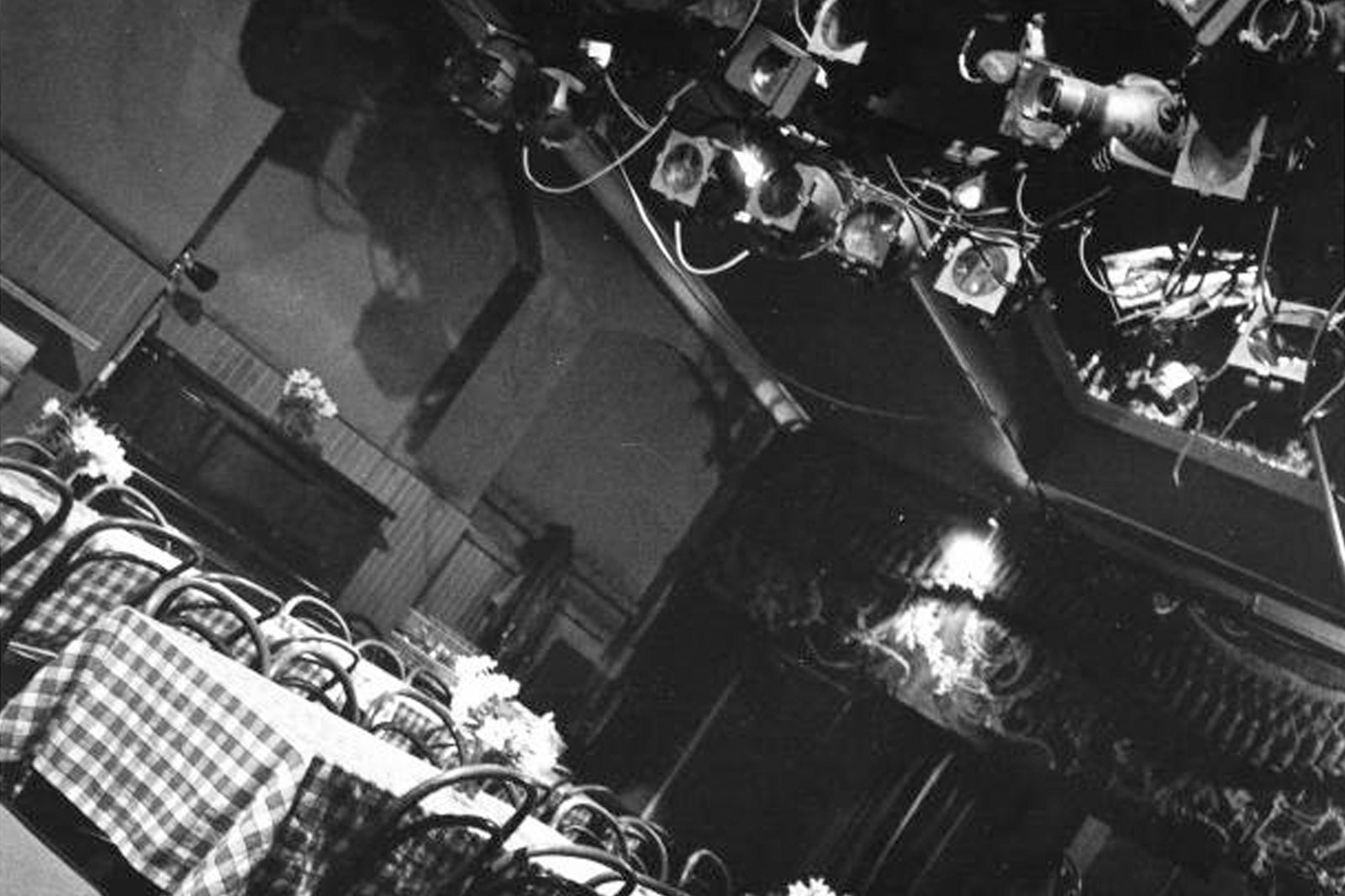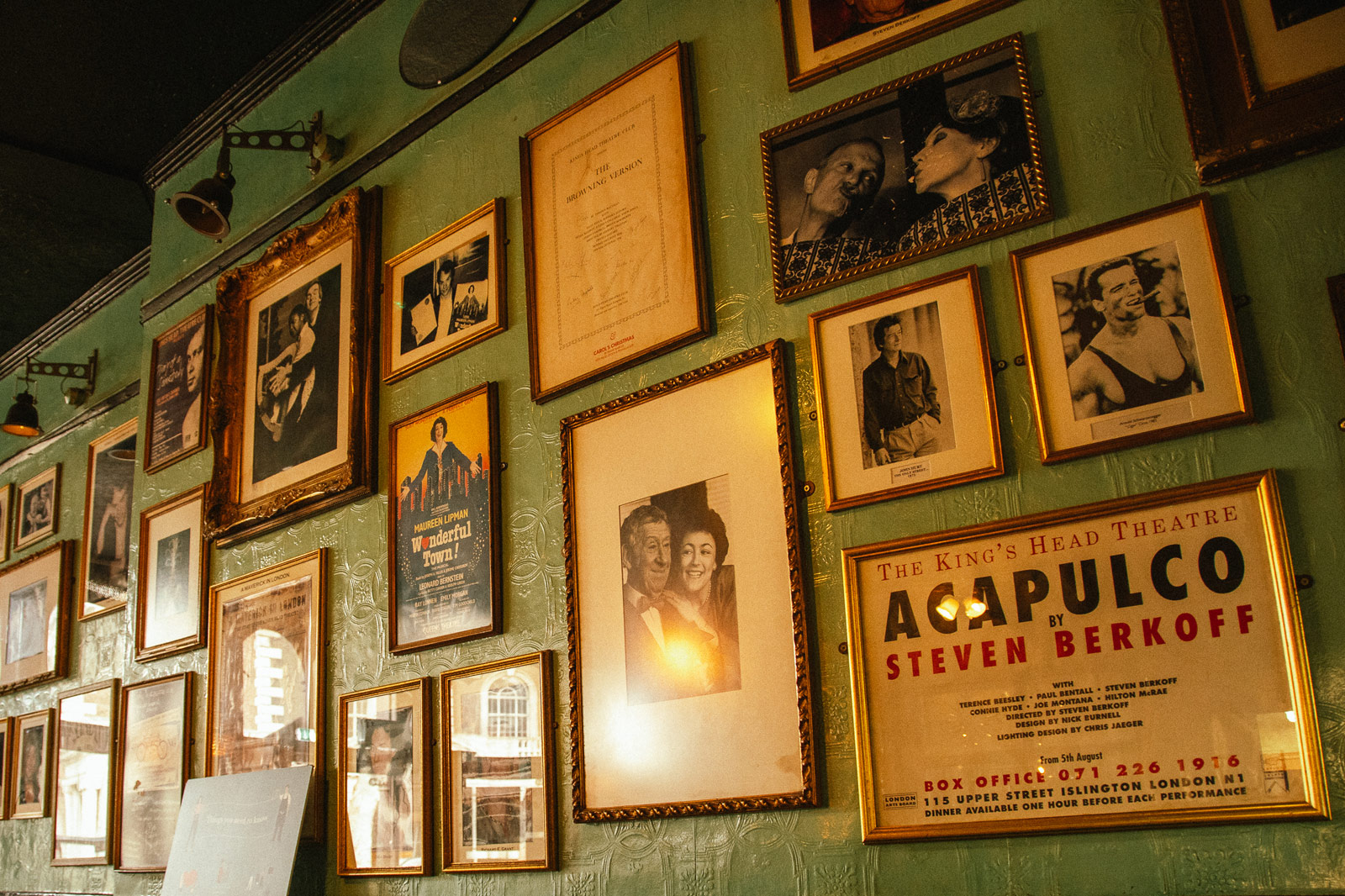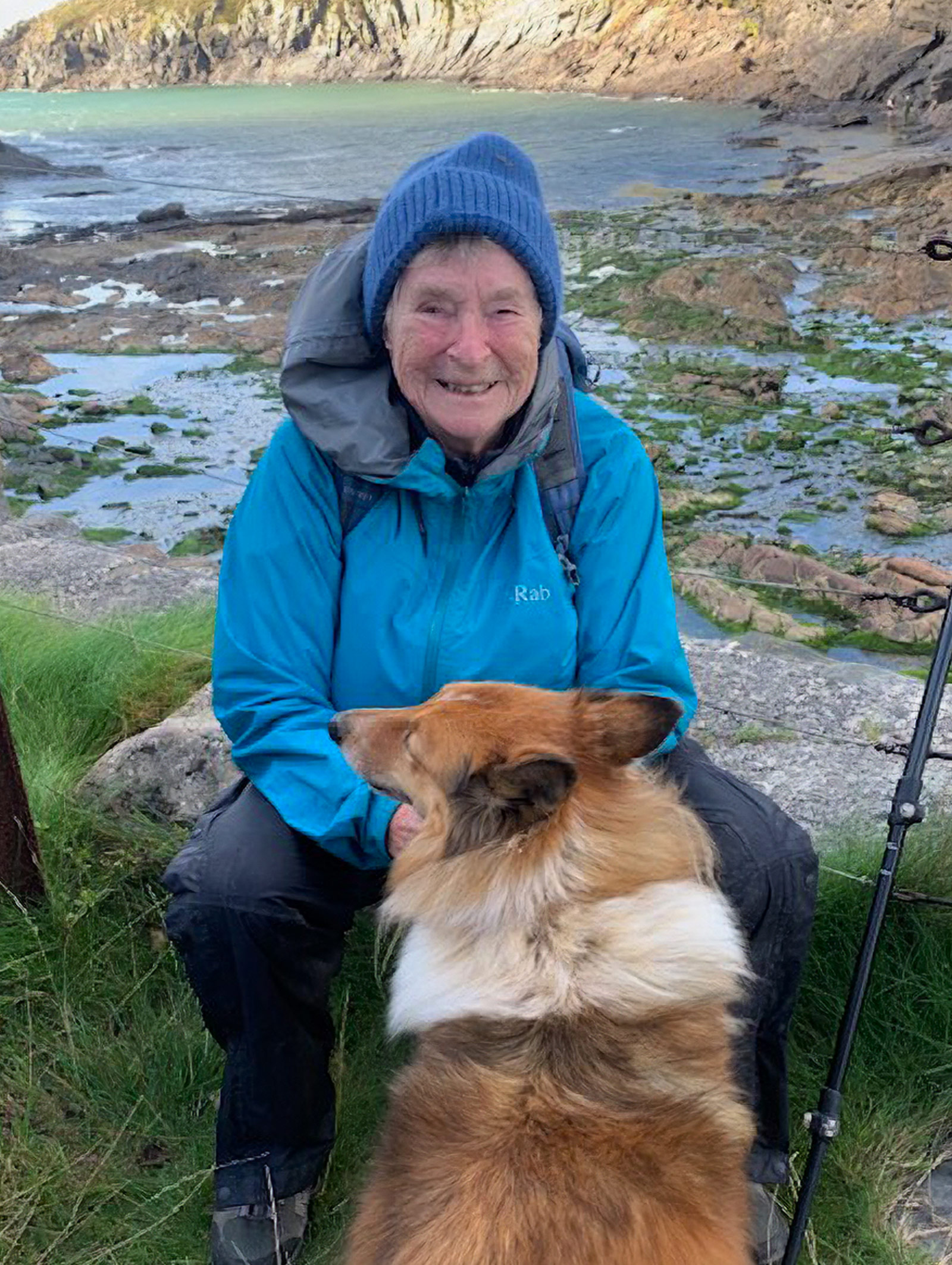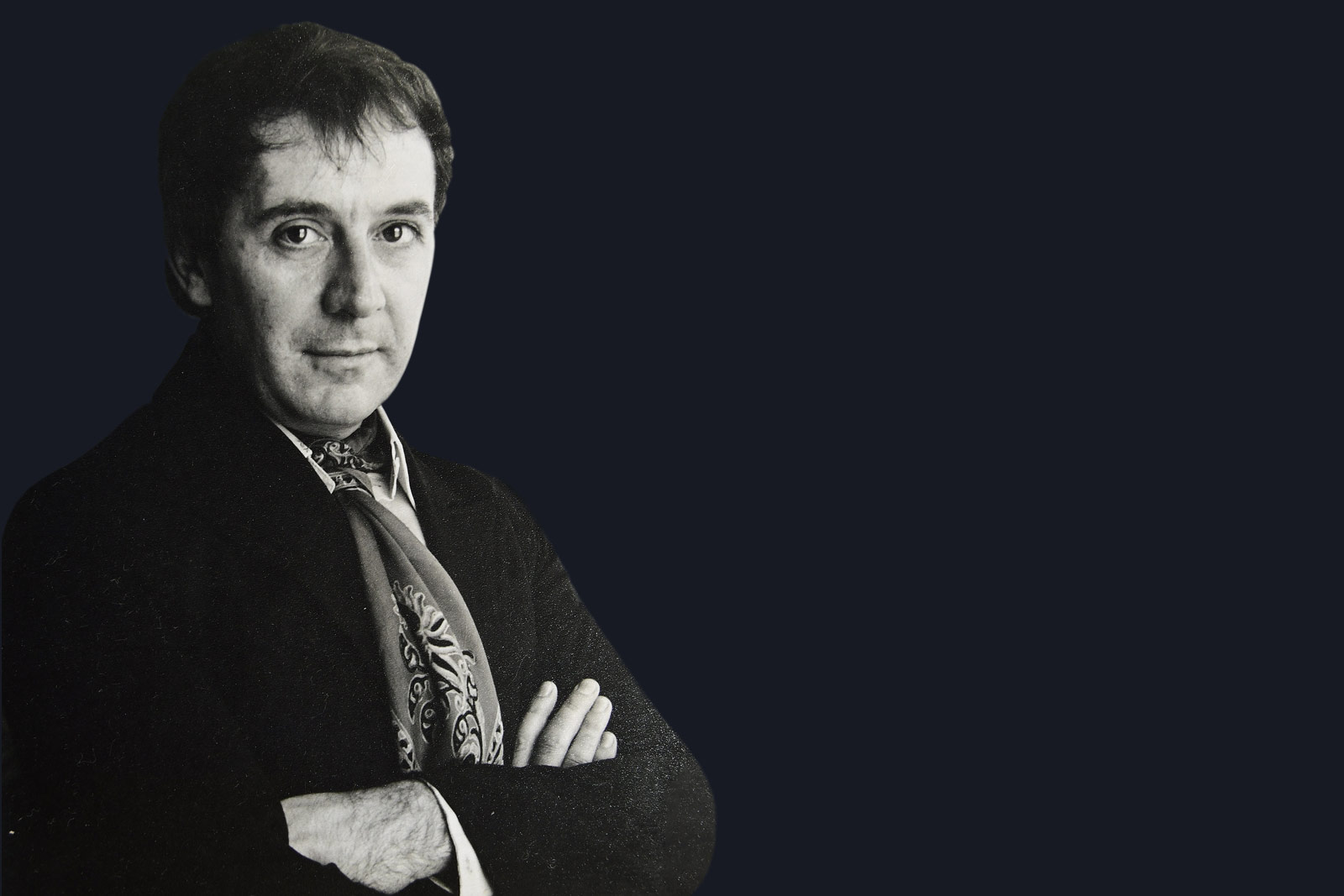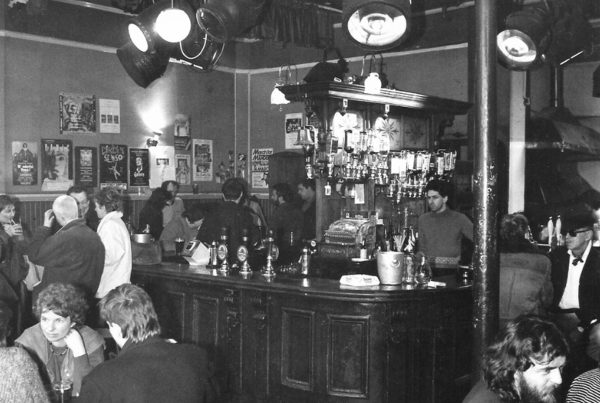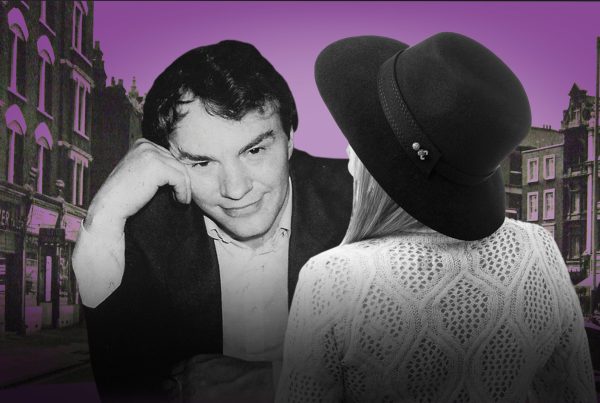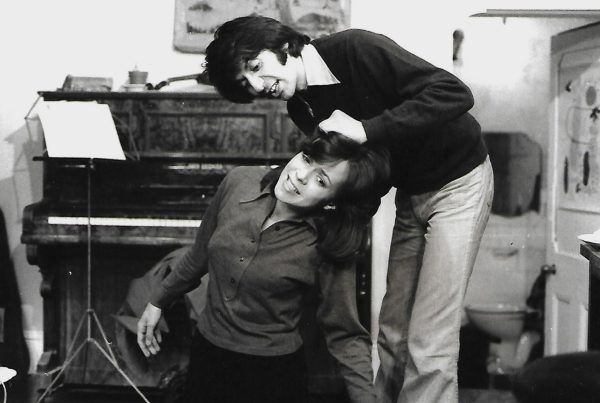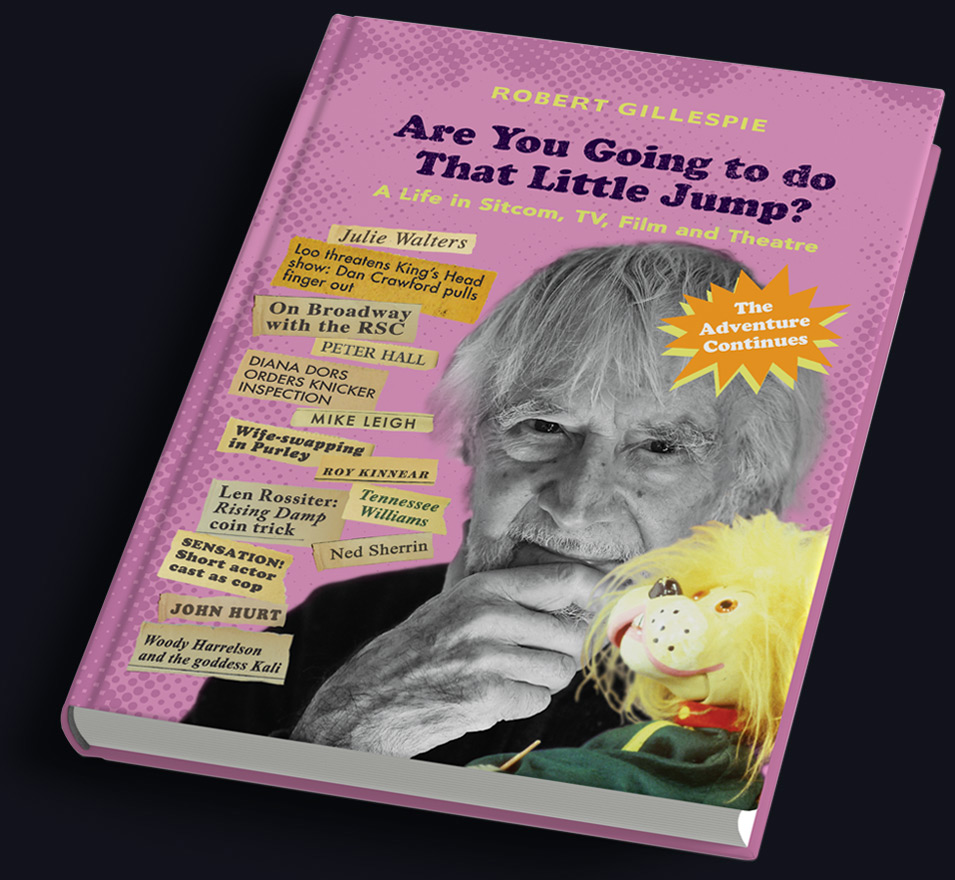Introducing part two of Joan Crawford’s remarkable story
The pattern of feast and famine continued over the years. Shortly after The Collector Peter Stevenson, then a solicitor, gave up his job and came to live and work at the Kings Head Theatre for the princely sum of £5 a week. Collecting offal from the local butcher, which served as blood and guts in Chris Wilkinson’s play I was Hitler’s Maid, opened up a whole new world for him! Peter rapidly graduated to directing, and proposed a production of Athol Fugard’s People Are Living There. Maureen Pryor agreed to play the lead. Again, half way through rehearsals, there was a panic. We received a polite but frosty phone call from a major literary agent who claimed to have the rights and to be currently negotiating a production with The Royal Court. It transpired that the Fugard rights had been granted to both the publisher, with whom we had negotiated, and the agency. Hung with horseshoes as we seemed to be, our production went ahead.
Subsequent to this, Peter directed two further Fugard plays, Hello and Goodbye with Janet Suzman and Ben Kingsley and The Blood Knot. These marked a high water point of artistic achievement and we thought we had made it. However, a further period of famine followed in 1973/74. On top of everything else, the then Greater London Council threatened to close us down because we had no fire exit. We had previously applied for access to the North London Sorting Office of the GPO, which lay directly behind us, but had been turned down on the grounds of security. We appealed to the Arts Council who were then funding us, and it was all settled between Lord Goodman, the then Chairman of the Arts Council, and the Head of the GPO over a brandy snifter in a gentleman’s club!
When in 1974 we were approached by an American producer who was doing the rounds of London theatres with a play called Kennedy’s Children by Robert Patrick, we were close to bankruptcy. We had no further productions planned because we could see no way of financing them. Kennedy’s Children was our last ditch stand. Three days before the production opened a bailiff from the London Electricity Board descended on us. We had a stark choice- give him a cheque for £357 or have our electricity cut off. I boldly wrote out the cheque knowing with absolute certainty that there were no funds in the bank to cover it. Three days later the play opened to rave reviews, and the bookings flowed in. On the Monday Dan visited the bank manager with the booking sheets and implored him to meet the cheque, to which he agreed, despite having previously insisted he would never give us another inch of credit.
As we had planned no further productions, we were able to run Kennedy’s Children with packed houses every night for five months. There was an uncanny parallel between the stories of the off-broadway theatre that shot to stardom overnight and of the Kings Head rising like a phoenix from the ashes of potential ruin. I got a sore wrist writing cheques daily to our multiple creditors.
Throughout all this Dan and I and our stalwart team made fires-all twelve of them-pulled pints, cashed up the till, hired and fired bar staff, chose plays, directors, actors, made fast friends, fought, despaired, hoped and created something eccentric and unique. In 1975 Dan and I separated and I left the Kings Head. In his indomitable way Dan carried on for a further 30 years in the face of endless adversity, producing an exotic mixture of revivals, musicals and radical new plays, firmly establishing the Kings Head’s reputation as the leading London pub theatre. When I look back now with the caution of advancing years I am gobsmacked by our gall and our nerve. In an age of increasing regulation it is hard to imagine such a venture succeeding now-more’s the pity.
Here’s to the King’s Head. May it find a future.
Postscript
Joan’s story is pure gold! Even though I had a show on at the King’s Head in the second year of its life (1971) I only picked up the faintest whiff of the hour by hour crises, turmoil, extravagant ups and downs of the venue’s daily life as described by Joan. Visiting artists like me, and my brilliant casts of actors, dealt with the shocks and problems and triumphs of the shows we brought to Joan and Dan, but we weren’t immersed in the heat and tumult of “events” as they and their staff were, twenty-four hours of every day. As I describe in in Chapter 4 of Are You Going to do That Little Jump? Volume Two (the pink cover on the right), without Joan, the enterprise would never have flourished, nor survived. It’s a great personal pleasure for me to set the record straight.

